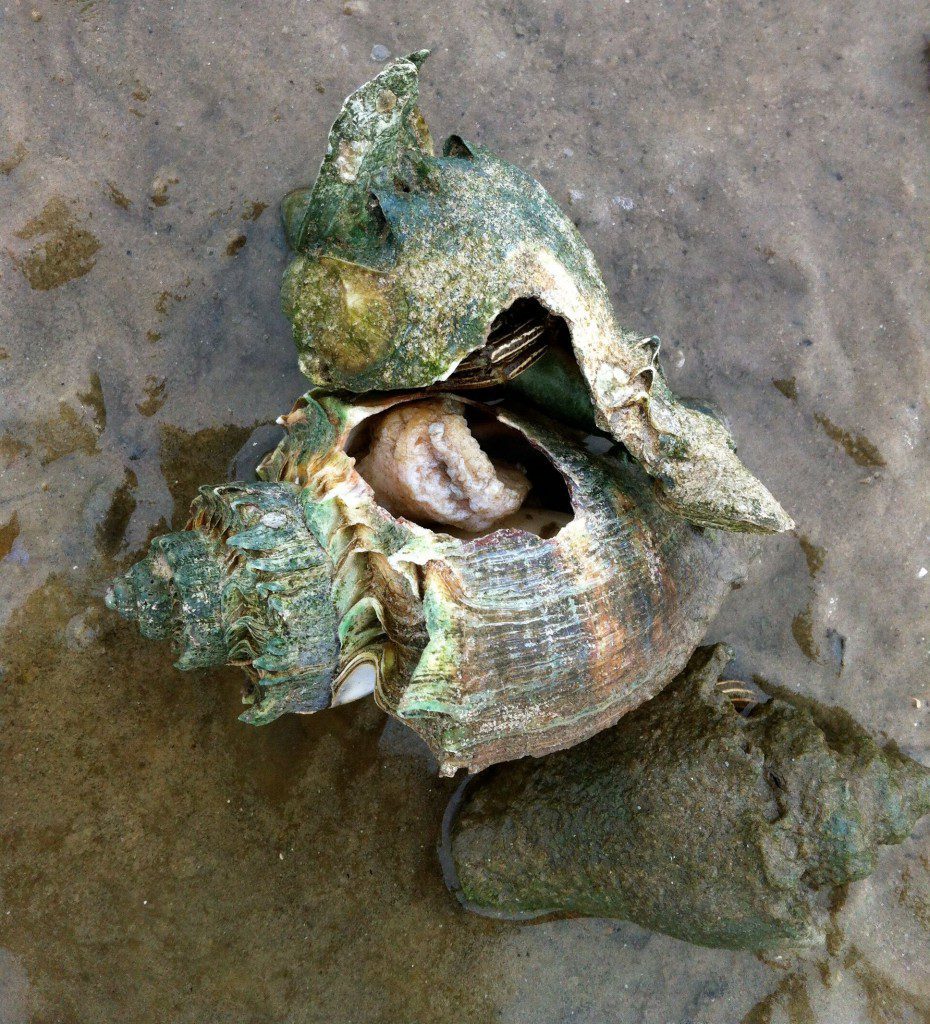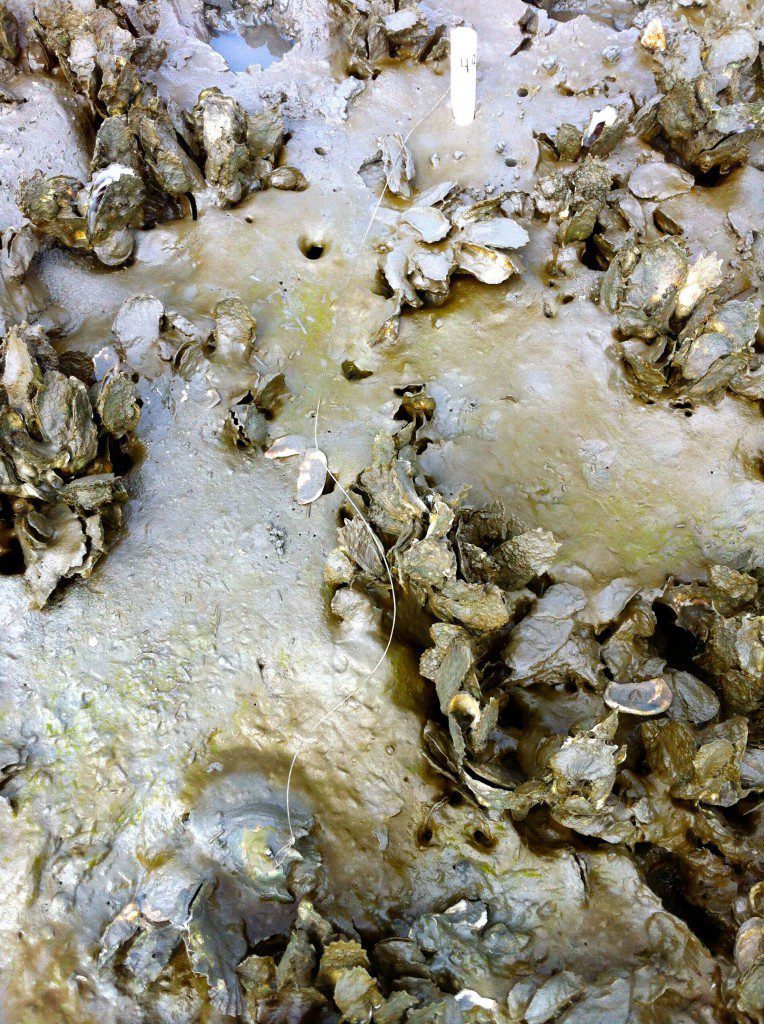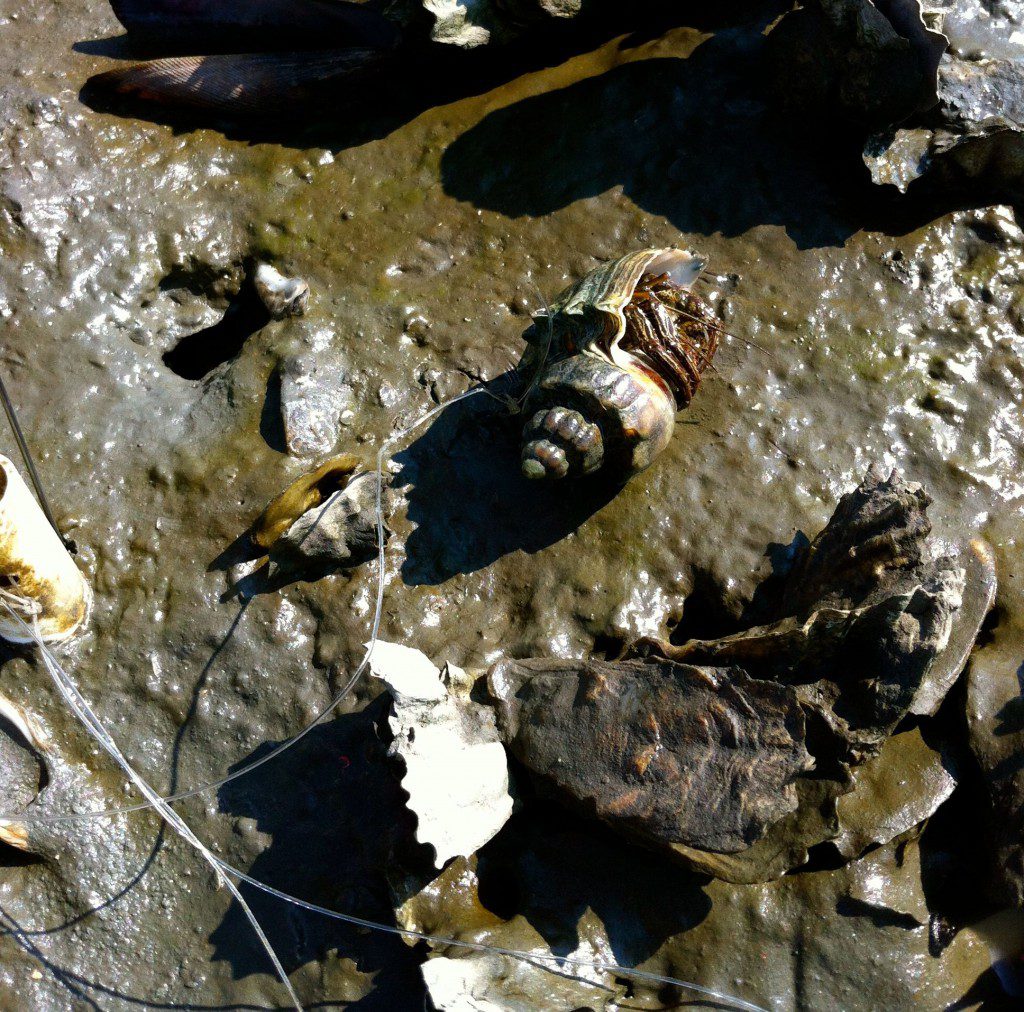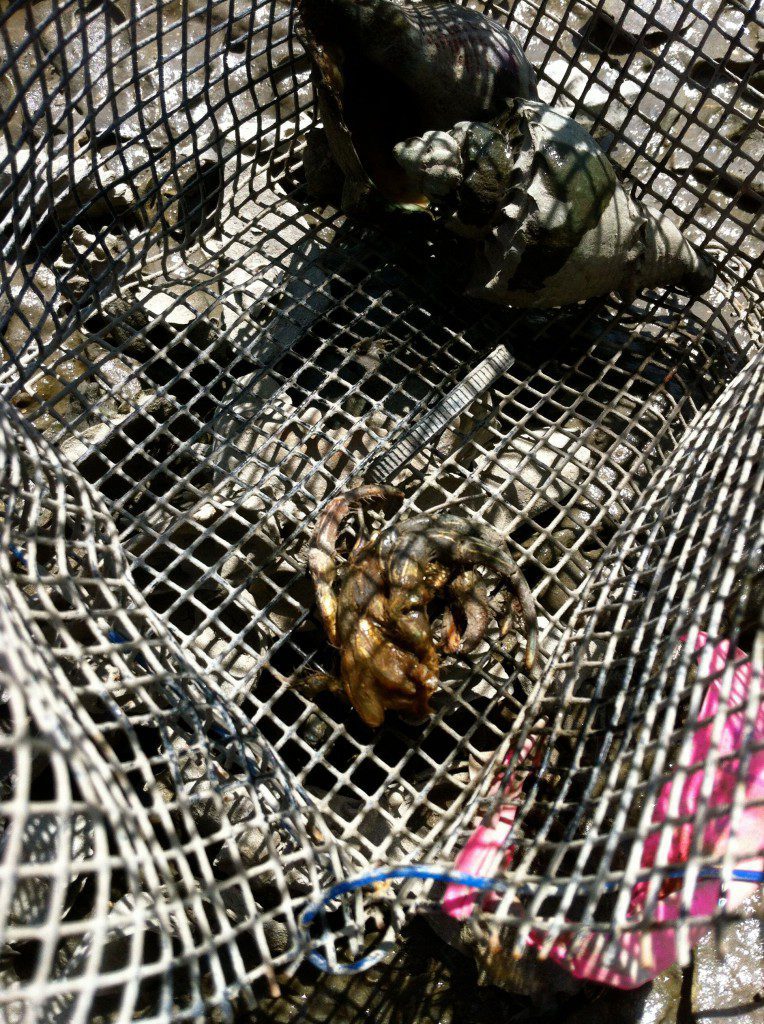Last week David connected the regional dots, noticing similarities in oyster reefs overrun by oyster eating crown conchs across North Florida, from the Matanzas Reserve south of Saint Augustine to Apalachicola Bay. That included a breakdown of what they found during surveys of the Bay. Below, Hanna Garland details one of her experiments mentioned by David in the post.
Hanna Garland FSU Coastal & Marine Lab
Gaining a better understanding of the beautiful yet complex habitats that border our coastlines require a significant amount of time surveying and manipulating organisms (as you may know if you have been following our research for the past three years!), and even so, there can still be limitations in whether or not we truly know what is “naturally” occurring in the system. Unfortunately, pristine salt marshes, seagrass beds and oyster reefs are in a general state of decline worldwide; however, this only heightens our incentive to investigate further into how species interact and how this influences the services and health of habitats that we depend on for food and recreation.
For the past two and a half years we have been studying the oyster populations along 15km of estuary in St. Augustine, but it did not require fancy field surveys or experiments to notice a key player in the system: the crown conch. Present (and very abundant!) on oyster reefs in the southern region of the estuary, but absent in the northern region, it was obvious that there were interesting dynamics going on here…and we were anxious to figure that out!
 In hopes of addressing the question: who is eating whom or more importantly, who is not eating whom, we played a game of tether ball (not really!) with nearly 200 conchs of various sizes by securing each one to a PVC pole (with a 1m radius of fishing line for mobility) onto oyster reefs. After six months (and still ongoing), the only threat to the poor snails’ survival appeared to be the thinstripe hermit crab (Clibinarius vittatus)!
In hopes of addressing the question: who is eating whom or more importantly, who is not eating whom, we played a game of tether ball (not really!) with nearly 200 conchs of various sizes by securing each one to a PVC pole (with a 1m radius of fishing line for mobility) onto oyster reefs. After six months (and still ongoing), the only threat to the poor snails’ survival appeared to be the thinstripe hermit crab (Clibinarius vittatus)!
Hypothesized that hermit crabs invade and occupy the shell of a larger crown conch in order to have a better home, we decided to further investigate the interactions between crown conchs and hermit crabs by placing them in a cage together (almost like a wrestling match).
After only a few days, the mortality began, and results showed a weak relationship between species and size, and appeared to be more of a “battle of the fittest”.
The implications of how the interactions between crown conchs and hermit crabs influence the oyster populations are still largely unknown, but knowing that neither species have dominance over one another is important in understanding the food webs that oyster reefs support…and that organisms occupying ornate gastropod shells can be lethal as well!
In the Grass, On the Reef is funded by a grant from the National Science Foundation.




1 comment
[…] Donate Skip to content HomeThe ScienceThe “In the Grass, On the Reef” Master PlanCoastal Habitat Quick DictionarySalt MarshIn the Grass- Salt Marsh Biodiversity StudyMeet the Species “In the Grass”Oyster ReefOn the Reef- The Biogeographic Oyster StudyMeet the Species “On (and swimming around) the Reef”Watch Oysters GrowJacksonvilleSaint AugustineAlligator HarborSeagrass BedPredatory Snails, and Prey, of Bay Mouth BarIn the Grass, On the Reef DocumentaryEcoAdventures North FloridaEcoAdventures HomeActivitiesPaddlingHikingBird/ Wildlife WatchingArt/ PhotographyHistory/ ArcheologyApalachicola River and Bay Basin ← Notes From the Field: Hermit Crab/Crown Conch Cage Match […]
Comments are closed.